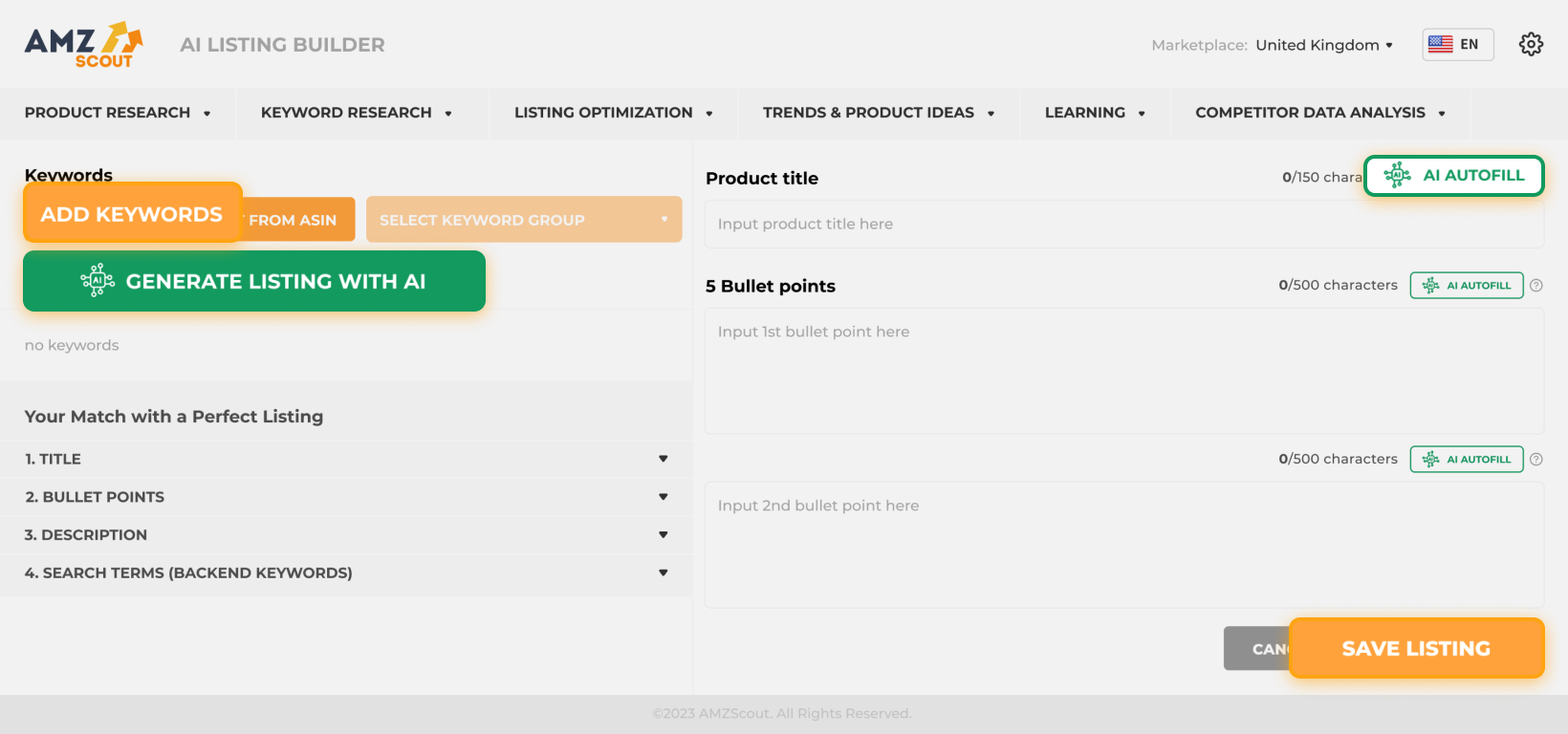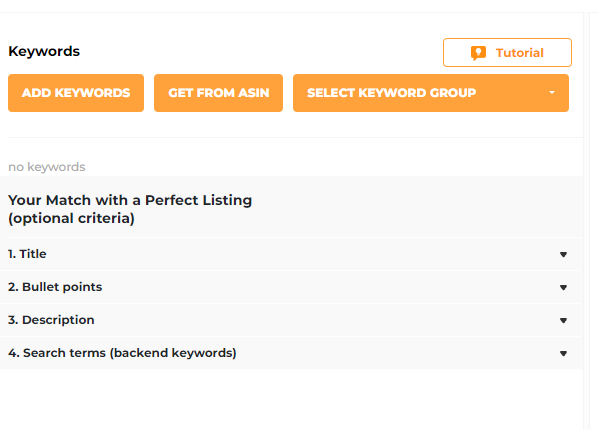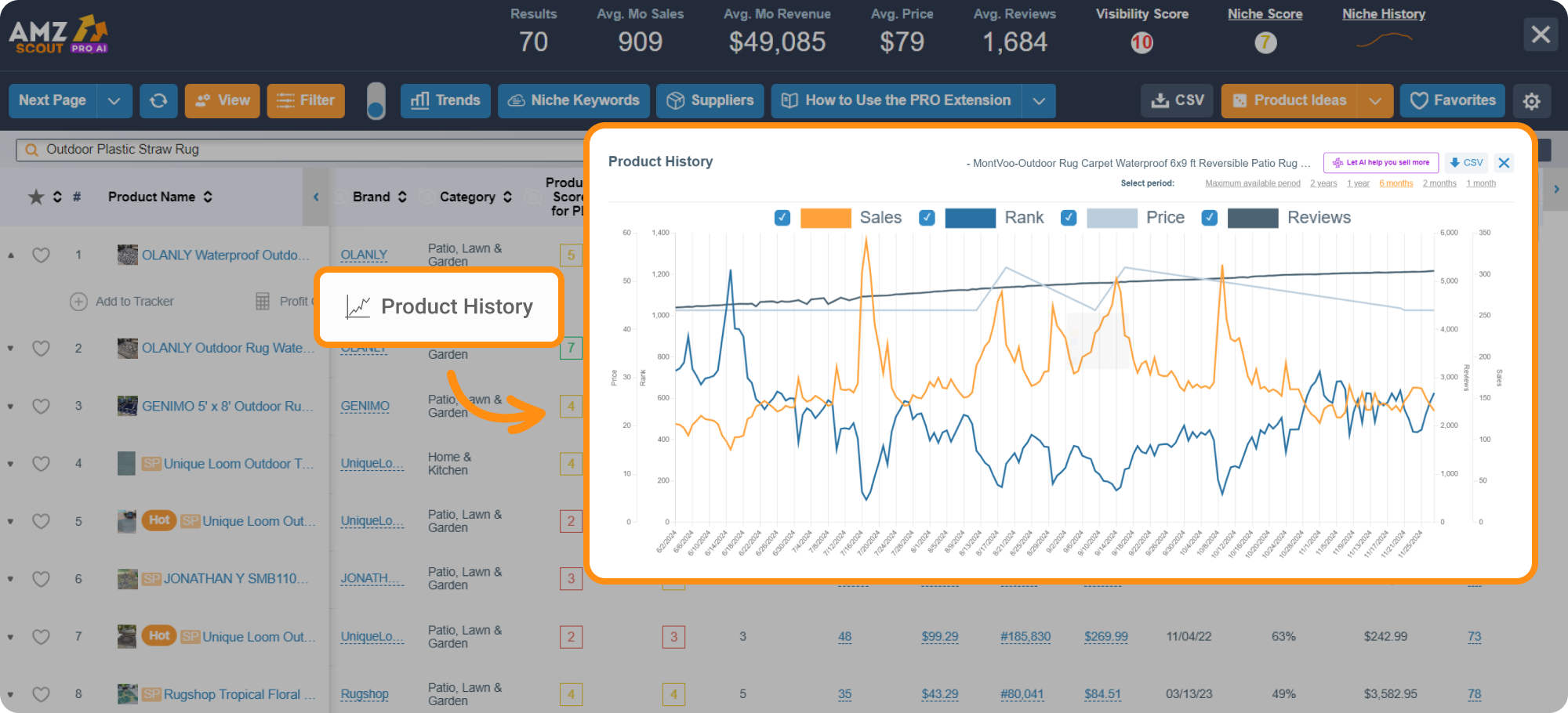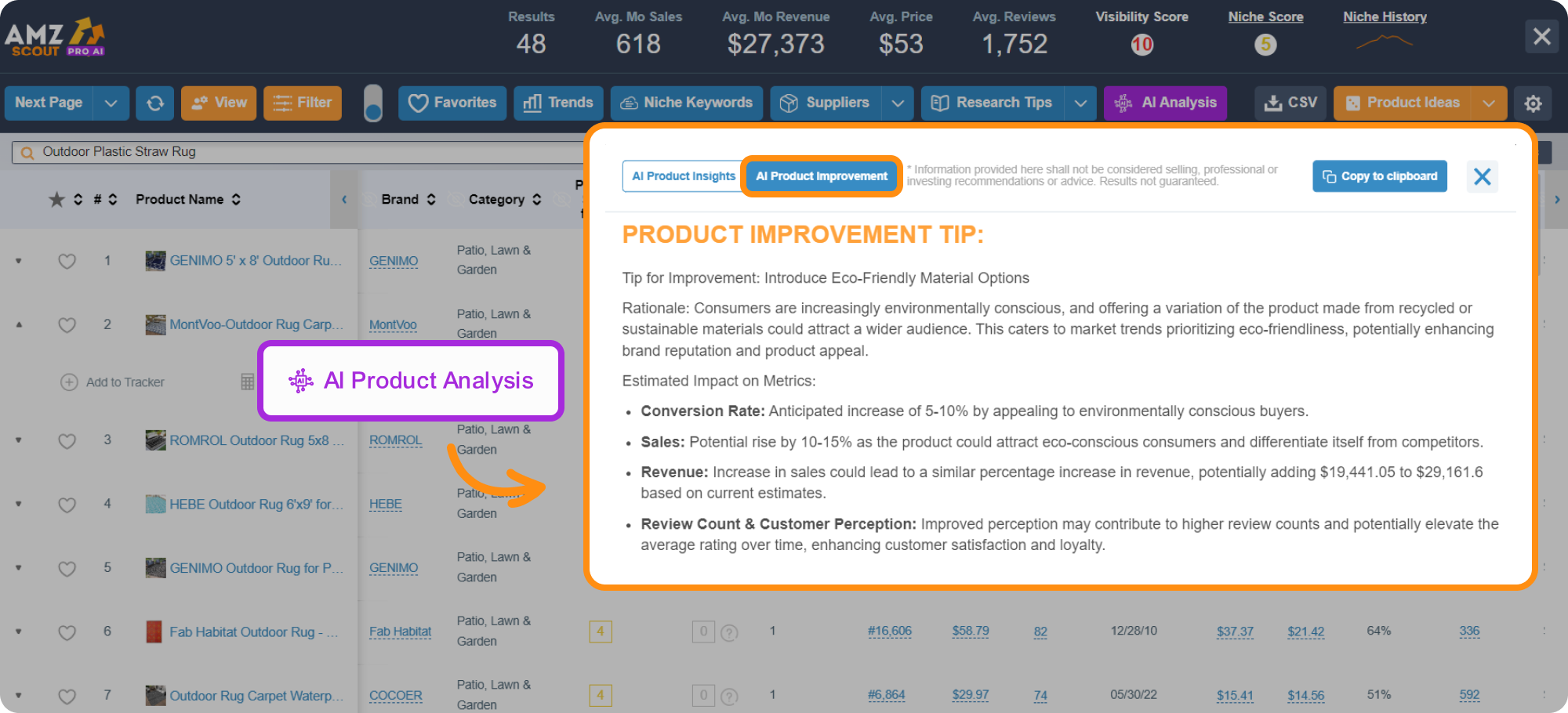
What is the Amazon Transparency Program?
Brand owners frequently encounter counterfeit issues, making it essential to protect your brand's integrity. Fortunately, Amazon sellers can leverage the Amazon Transparency Program to combat these types of issues. To maximize the advantages of this program, it’s important to have a clear understanding of how it works.
In this article, we’ll provide an overview of the Amazon Transparency Program and share additional strategies to help you maintain a strong, reputable brand.
Table of contents
What is the Amazon Transparency Program?
The Amazon Transparency Program empowers brands with a mechanism that blocks counterfeit sales. Participants receive unique barcodes from Amazon, which they attach to their product packaging prior to shipping. These codes can be scanned via a special app to confirm the item’s legitimacy.
Unauthorized sellers are not able to list Transparency-enrolled products on Amazon, since they lack the corresponding codes needed for listing and shipping. This applies to non-Amazon global stores as well.
With this overview in mind, let’s dive into why private label sellers might find this program especially beneficial.
Benefits of the Amazon Transparency Program for Private Label Sellers
The Amazon Transparency Program equips private label sellers with a highly effective solution designed to protect their businesses and help their brands shine in a competitive marketplace. Here are the key advantages you’ll gain by joining the program:
Protect Your Brand: For sellers who build their own brand, brand identity is their core asset, making protection essential. The Amazon Transparency Program provides unique codes that can be scanned using the Transparency app to verify authenticity and combat counterfeits effectively.
Build Customer Trust: Customers can scan Transparency codes to verify that they’re purchasing authentic products, which boosts confidence in your brand. This Amazon-backed assurance builds trust, encourages repeat purchases, and fosters loyalty—crucial for growing a new brand.
Reduce Counterfeit Listings: By tracking and verifying units, the Transparency Program removes fake listings that threaten your sales. This helps prevent negative reviews, preserves your reputation, and paves the way for higher profits and a loyal customer base.
Enhanced Branding Opportunities: Enrolling in the Transparency Program earns your product a badge that is displayed next to the product, signaling authenticity to shoppers. For private label sellers, this boosts visibility by catching customers’ attention, while also enhancing your brand’s value and building trust in the eyes of buyers.
While the Amazon Transparency Program bolsters your brand, other factors can further enhance your brand seller presence on the platform. Let’s explore these in the next section.
Essentials of Maintaining a Successful Brand on Amazon
Building a thriving brand on Amazon depends on a blend of key factors. While some specifics may vary based on your product type or selling approach, certain components remain universal for all Amazon sellers. Here are the top four:
Listing Optimization
When launching your own brand, crafting a listing from scratch is vital, as its quality can significantly impact your performance. To succeed, your listing must be SEO-optimized for Amazon’s search algorithms while remaining engaging for customers. Here are the key elements to focus on:
Visuals: Incorporate high-quality images and videos to grab the attention of buyers. Enhance your listing’s appeal with A+ Content to showcase your product’s story and benefits visually.
Title: Create a catchy, compelling title that entices customers to click. Include relevant keywords naturally to boost search visibility.
Description: Write a clear, keyword-optimized description that highlights why customers should choose your product. Keep it persuasive yet easy to read.
Bullet points: Use concise, keyword-rich points to outline key features and benefits. Make them scannable to quickly capture customer interest.
Backend keywords: Add efficient, targeted keywords that remain invisible to customers but are crucial for Amazon’s search algorithms.
Note: Achieving an optimized listing requires in-depth keyword research and skillful integration while preserving readability of the text. You’ll also need to comply with Amazon’s guidelines about symbols, text length, and other standards.
Building an effective listing can be time-consuming and challenging, especially for newcomers with limited experience. Fortunately, Amazon sellers can use an AI Listing Builder to generate optimized, compelling text in seconds, simplifying the process.
Get an Effective Listing
The AMZScout Listing Builder empowers you to craft a standout listing that complies with Amazon’s standards and sets you up for success right away. Follow these steps to make the most of this tool:
1. Open the AMZScout AI Listing Builder. Enter your email address to start a free trial.
2. Add keywords. Input any keywords from your own research for full control. Alternatively, you can enter competitors’ ASINs to automatically extract their proven keywords and leverage their success with minimal effort.
3. Generate content. Click “AI Autofill” to create optimized titles, bullet points, and descriptions that meet Amazon’s character limits and incorporate your keywords seamlessly. The tool also suggests backend keywords to boost searchability.
Tip: Adjust the AI’s output to suit the tone of your audience, and use the checklist in the bottom-left corner to ensure Amazon compliance.
4. Save your listing. Hit “Save” to lock in persuasive, SEO-ready text that’s tailored specifically for your Amazon store.
This tool enhances your listing’s visibility, strengthens your brand’s image, and drives traffic to your product, ultimately boosting conversions and long-term growth.


Competitor Analysis
One of the most powerful strategies for building and maintaining a strong brand is understanding how your competitors are performing. By keeping a close eye on their strengths and weaknesses, you can fine-tune your strategy and position your brand more effectively in the market.
Several key metrics can help assess competitor performance, but for this guide, we'll focus on sales, pricing, and product insights. To streamline this research and gain valuable data, we’ll use the AMZScout PRO AI tool.
Here’s how to use it:
1. Install the AMZScout PRO AI Extension. Enter your email address to start a free trial.
2. Start your search. Enter a product or category name into the Amazon search bar.
3. Open the AMZScout PRO AI Extension. Click the AMZScout icon in the bottom-left corner of your browser to open the extension and view competitor data.
4. Evaluate the competition. Take a look at these key factors:
Listing duration: Look at the Available From column next to products that appear on the first page of search results. These product listings often generate the highest sales, which provides a clearer picture of the market. Longer availability usually indicates more established competition.
Review count: Examine the Number of Reviews column. A higher review tally often points to tougher competition, making it trickier for a new listing to break through.
Competitor density: On Amazon, look at the number of results for a specific search term to measure the total level of competition.
5. Evaluate competitor performance. Sort products in the Estimated Sales column to quickly identify top performers, particularly those with price points similar to yours, and find products comparable to your own. Then click on Product History to dive deeper into that item’s performance trends.
Pricing: Compare your competitors’ prices to develop an effective pricing strategy for your products.
Sales: Observe whether sales are rising, stable, or declining. This insight will help you gauge the level of demand.
Reviews: Determine whether an increase in reviews correlates with sales growth, as this can indicate the effectiveness of your competitors' customer engagement and product appeal.
6. Assess the product’s strengths and weaknesses. Click on the AI Product Analysis section under any product to get a summary of its strengths and weaknesses.
By utilizing pricing analytics and evaluating the overall market performance, you can develop a competitive pricing strategy that positions your products strategically relative to competitors and enhances your brand's presence on Amazon.
Customer Support
A loyal customer base is vital for any brand, and effective customer support is key to building it. Here are some strategies to ensure that your customers stay satisfied:
Provide fast answers: Aim to respond within a few hours, or at least within 24 hours, to show customers you value their time.
Be helpful: Deliver clear, concise, and useful responses that directly address customer inquiries in the Q&A section.
Respond to negative feedback: Address complaints politely and promptly, offering practical solutions to show that you care about resolving issues.
Personalize your interactions: Tailor responses with the customer’s name or specific details about their concern to make them feel valued.
By keeping your customers happy, you create a positive reputation that drives long-term success.
Product Improvement
In the previous section, we highlighted the value of responding to customer reviews and complaints. But words alone won’t suffice—action is also essential. Read your reviews to pinpoint what customers love and where your product or store needs improvement. Additionally, studying competitors’ reviews can reveal fresh ideas and give you a competitive edge.
Manually sifting through hundreds—or even thousands—of reviews can feel daunting, especially for high-demand products. To streamline the process, try an AI Review Analyzer: all you have to do is input a competitor’s ASIN, and it quickly extracts key insights, revealing what delights or frustrates buyers.
By consistently leveraging these findings, you can refine your product and sharpen your business strategy. This proactive approach helps you sidestep potential pitfalls and bolster your brand’s appeal.
Long-term brand success on Amazon requires ongoing effort, with results typically emerging after a few years of consistent work. Staying focused and adaptable is key to navigating this gradual process.
How to Get Started with the Amazon Transparency Program
To participate in the Amazon Transparency Program, you must meet specific eligibility criteria. Here are the key requirements:
Location: Be based in one of the 10 countries where the program is available.
Amazon Brand Registry: You must be enrolled in the Amazon Brand Registry.
Trademark: Have a government-registered trademark (e.g., USPTO).
GTIN: Provide a Global Trade Item Number (GTIN) for your product, such as a UPC, ISBN, or EAN.
Steps to Enroll in the Program
In order to join the Amazon Transparency Program, sellers need to complete the following five steps:
Step 1: Enroll your brand. Go to the program website and click “Enroll Now.” You’ll be redirected to the Transparency portal. Use the same credentials you use for the Brand Registry portal to log in.
Step 2: Choose your label type. Decide whether you need barcodes for new products, existing products, or if you require a custom label design.
Note: If you're using existing codes, ensure that they comply with Amazon's standards.
Step 3: Add transparency codes to your products. Download the Transparency codes from the portal. Then you can apply the labels yourself or send them to a third-party service for labeling.
Step 4: Pass the operational performance review. Amazon will monitor enrolled products. Transparency protections will only be active once a product passes the operational performance review with at least 98% accuracy.
Step 5: Manage transparency protections. A transparency code will be required each time you create a new offer in the Amazon store. You can then monitor Amazon’s checks through detailed reports that are available in the Transparency portal.
The review process typically lasts over 30 days. For FBM sellers, the process may take a few additional weeks as you await a response from your Transparency contact.
By meeting these requirements, you can enhance the protection of your brand and improve your business on Amazon.
FAQs
What does it cost to participate in the Amazon Transparency Program?
Joining the Amazon Transparency Program is free, but you’ll need to invest in unique Amazon-issued codes for your products. Customers can scan these codes with the Transparency app to verify your product’s authenticity. Each label costs between one to five cents, with Amazon providing discounts based on volume.
Are there any limitations when it comes to enrolling in Amazon Transparency?
Yes, the Amazon Transparency Program is currently available in only 10 countries, so accessibility may be limited depending on your location. To participate, you must also meet specific eligibility requirements, including owning a registered trademark, being enrolled in Amazon Brand Registry, and having a Global Trade Item Number (GTIN) for your products.
Can I enroll in the program if I’m a new seller?
Yes, new sellers can sign up for the Amazon Transparency Program, as long as they meet the criteria noted above. You may also consider enrolling in supportive Amazon initiatives like the IP Accelerator - this helps you secure a trademark, which is essential for both the Transparency and Brand Registry programs.
How does the Amazon Transparency program work for FBM sellers?
FBM sellers can use the Transparency labels provided by the program on their products or packaging. To activate protection, email your transparency contact to begin the review process. Once your item is approved with 98% accuracy, submit codes for each new order through your Seller Central to enable monitoring.
Is the Amazon Transparency program worth it for private label sellers?
The Amazon Transparency program is useful due to the brand protection it provides, as it strengthens your branding strategy while potentially increasing profits. However, it’s also important to consider the downsides: the costs for transparency codes, extra steps if you ship products yourself, and the need to use codes even when selling beyond Amazon.
Conclusion
While protecting your brand is crucial, it’s not enough to simply combat counterfeiters—you must also focus on strengthening your overall branding if you want to boost performance. Consider leveraging the AMZScout toolkit to optimize your listings, analyze competitors, and get valuable insights for product improvement. By taking these steps, you’ll position your brand for long-term success and growth on Amazon.












